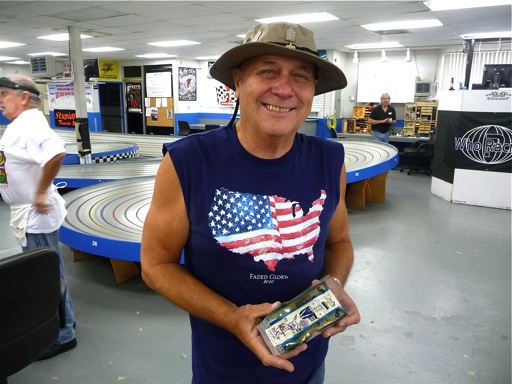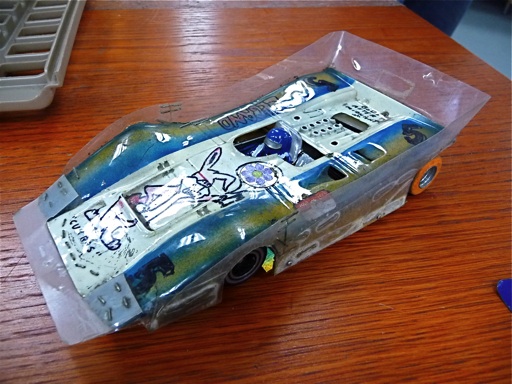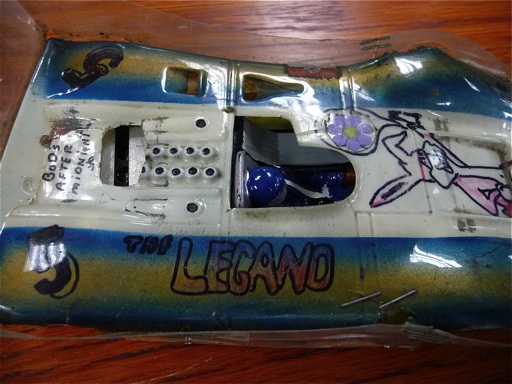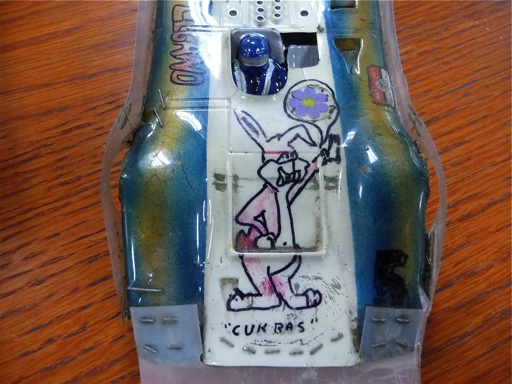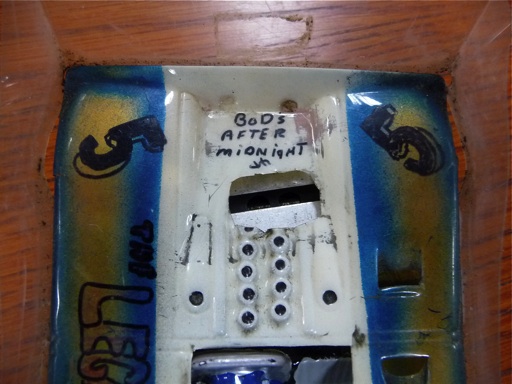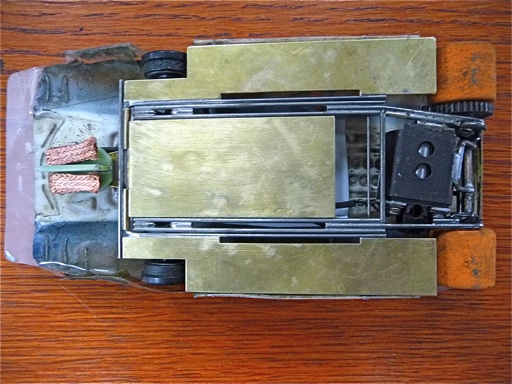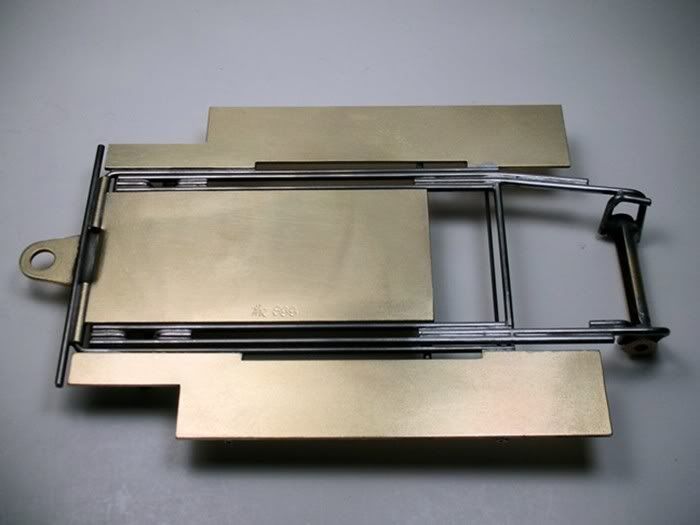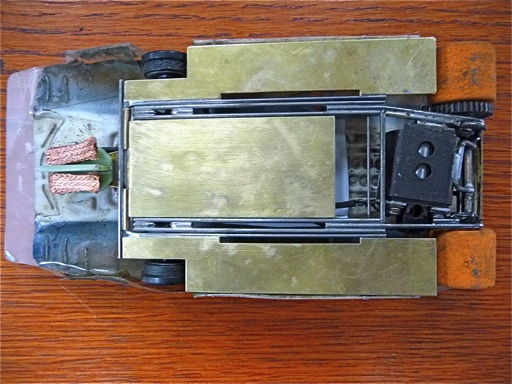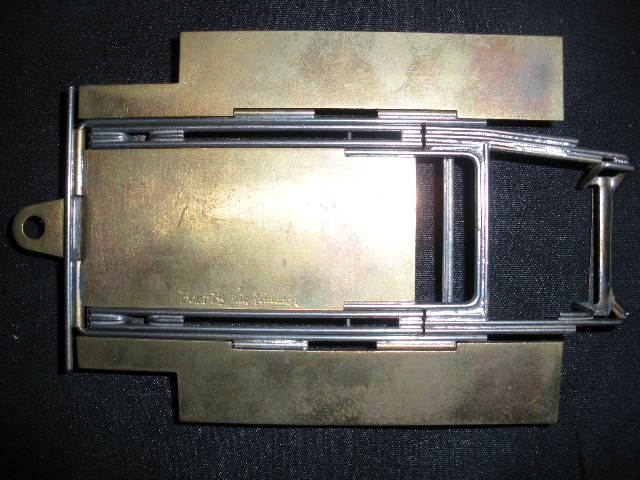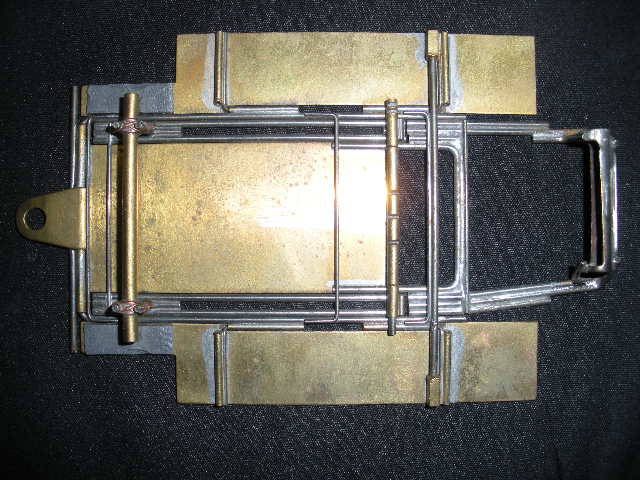Indeed, if the NCC was founded in late 1969, no NCC races took place until 1970.
The earliest form of "wing cars" are the 1967/1968 NorCal "thingies" fitted with Choti bodies and large side dams. I was a doubter myself until clearly confronted with clear and physical evidence plus direct testimonies from more than one actual actors.
Front and rear spoilers first appeared on pro-racing cars on Mike Morrissey's well published 1966 Team Russkit McLaren-Elva. A straight clear-plastic rear spoiler was supplied in the regular Russkit slot car kits from 1967, in their Chaparral 2 and 2D, Lotus 40 and McLaren MK2 kits.
For 1968, virtually all period documents show the use by all the top pros on both coasts of straight rear spoilers, with a flat front diaplane.
By 1969, the rear spoiler began wrapping around the body, forming a small box. Such die-cut rear spoilers were marketed by Pete Von Ahrens and reflected the state of the art of pro-racing cars. Small down force-generating winglets stapled (no one used glue yet) on the top of the front fenders were a quickly passing fad that still made the NCC regulations published in 1969 and illustrating clearly the state of the art aero package of top-level pro cars.
In 1970, Lee Gilbert was first to introduce small side dams on each side of the front fenders.
By late 1970, this had evolved in the complete wraparound seen on this particular car shown in the opening thread. Assuming that all components are original to the car, I would personally place it in 1971, for several reasons:
1) Assuming that this is the original motor and unless it is a one-off hand-formed can by either Bill Steube or Bob Green, the Mura C-can was not available before mid-1970 (and that is a clear and documented fact), and it is unlikely that a 16D-size Mura motor would fit in the allowed space.
2) The Kirby/Associated body of this Ferrari 612 was not available until 1970 (another documented fact).
3) I do not believe that the Riggen "grooved" fronts were available before 1970, but I could be wrong, I need to check the Riggen documentation on this.
4) I cannot recall anyone using non-hinged side pans until 1972, or a chassis wire crossbar of this design (not using a brass-plate reinforcement) until well after 1970, but anything is possible there.
5) The style of air control is more 1971 than anything before, as seen in this other 1971 car built by Bill Steube Jr, that was a sister car to the Mike Steube, Tucson USRA-winning machine of early 1971:
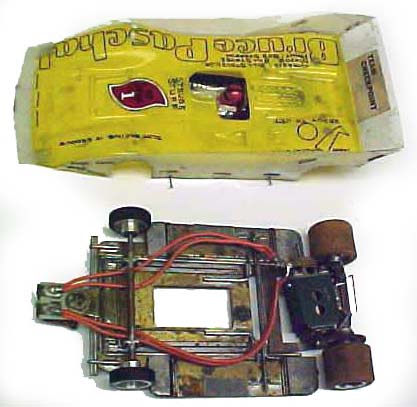
I was a direct and very interested witness of the technical evolution on the ground at that time and remember things quite clearly, as I was involved with the M.A.C. body business. Since the demise of MRJ, I also wrote several race reports for the SoCal USRA for Miniature Auto Racing and MC&S and am quite familiar with what pros used then on both coasts, and have lots of pictures to prove it. A study of these period magazines (including the Morrissey/Cukras papers, MC&S, Car Model, MAR etc.) plus the surviving cars still with their original bits tell the story clearly enough.
Lots of people today THINK that certain things and events took place at a certain time, but factual evidence is often different.

